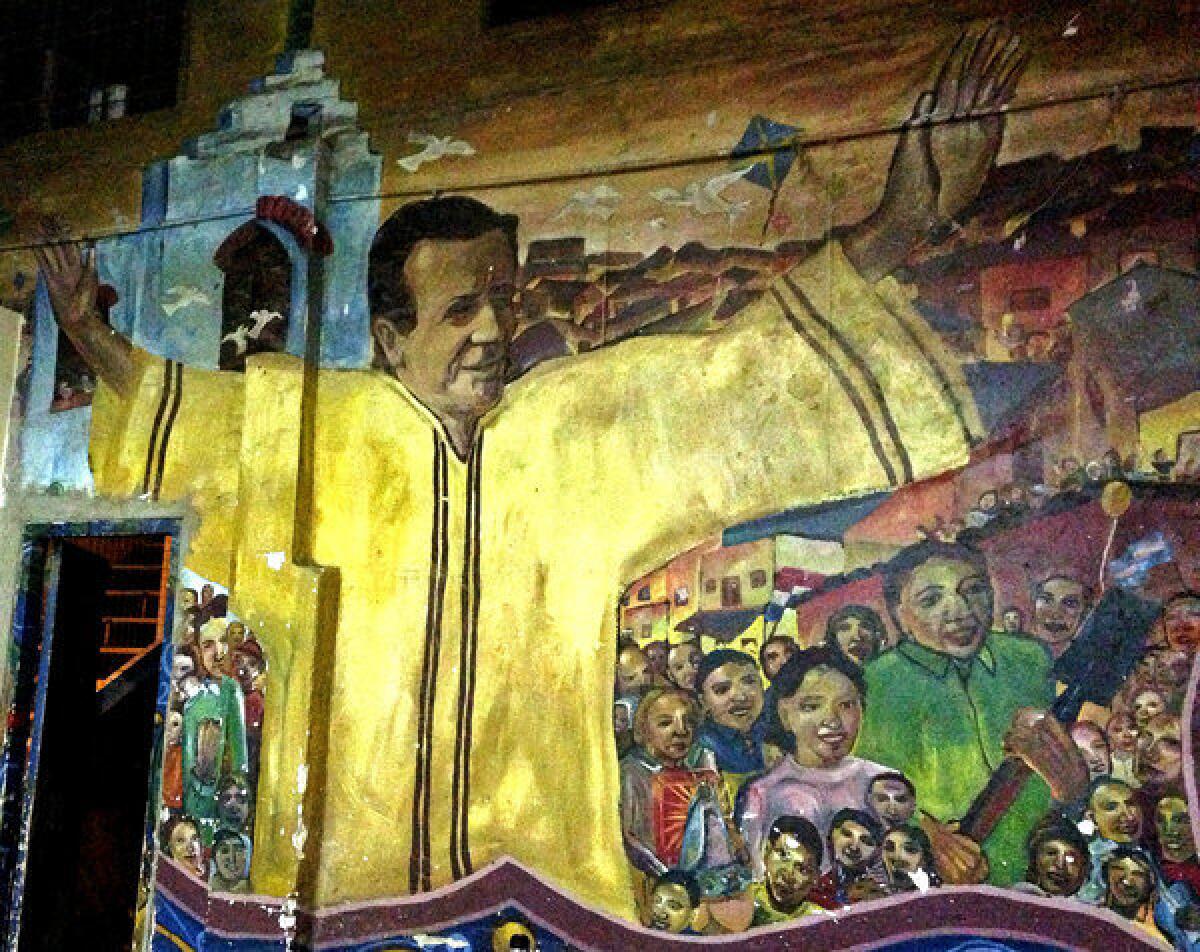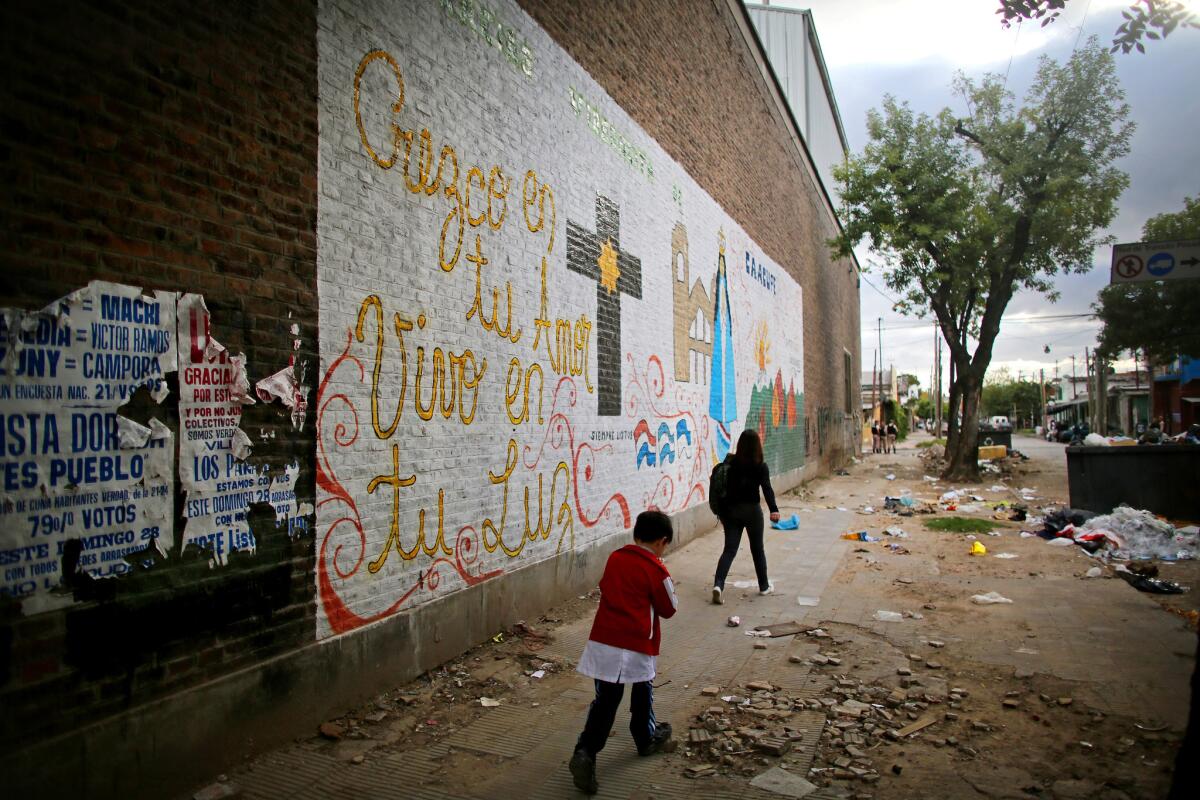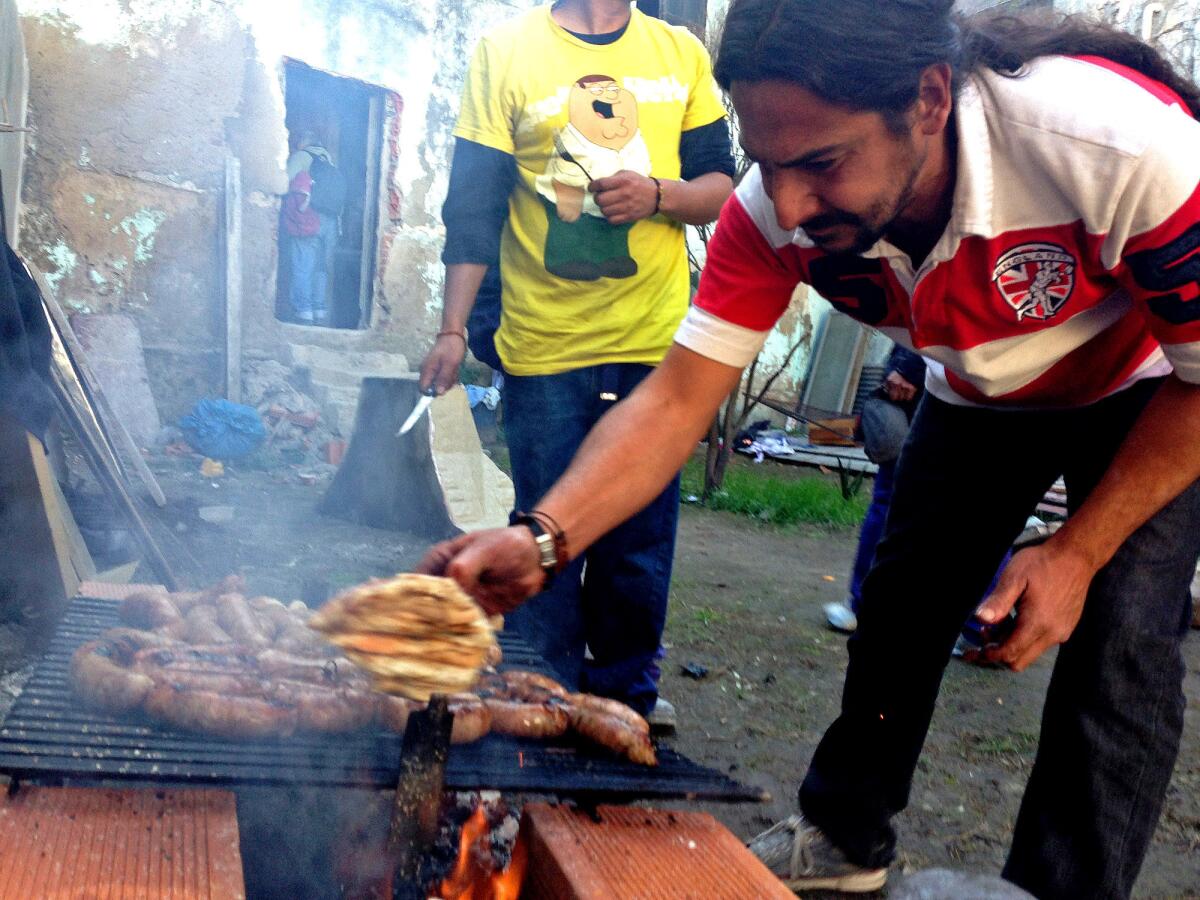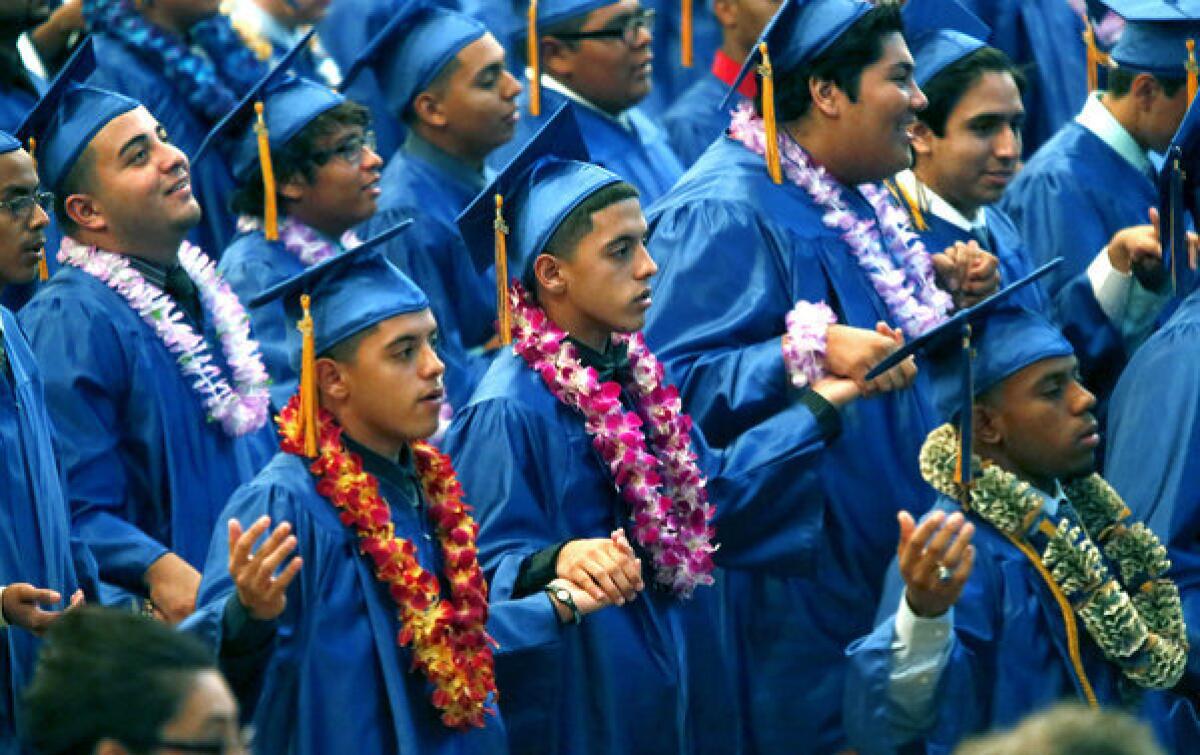Argentina’s ‘slum priests’ focus on helping rather than converting

They hear confessions from drug dealers and hit men and spend more time on problems practical than spiritual. The movement shunned by the church decades ago now gets support from Pope Francis.
- Share via

T
hey call the slums villas miserias, or little cities of misery. Instead of names, most have been assigned numbers by the Argentine government. Father Carlos Olivero lives in a small concrete church in the middle of Villa 21-24.
On a recent gray afternoon, he sat sipping yerba mate in a cold meeting room at the drug rehabilitation center he runs nearby. He was in a contemplative mood. A young addict he knew had died the day before.
"He was 24 years old," Olivero said. "We all loved him. Things like this happen all the time here."
Olivero is part of a line of "slum priests" who have worked for decades in the sprawling shantytowns worlds away from the tango salons and Parisian cafe culture of the other Buenos Aires.
He has scuffed work boots and dirty nails and hears confession from dealers and hit men. When residents spot his trashed 4x4 bumping down dirt roads, they call out his nickname: "Charly!"
He spends most of his time addressing practical rather than spiritual problems. That means navigating governmental bureaucracy, helping immigrants obtain state identification cards and finding beds to get addicts off the street.
"If we don't get people a home, it's insane to think about other kinds of lives for them," Olivero said.
So far this day he had talked to the directors of two state hospitals, attended a brainstorming session with other slum priests and handed out fliers about a religious festival for the neighborhood's large community of Paraguayan immigrants.
As he left to prepare for that evening's wake for the addict, he suddenly remembered something.
"Oh," he said, bringing his hands to his head. "I have a wedding tonight!"

The slum priest tradition started as a political statement.
In the 1960s, a group of priests inspired by Marxist ideology moved into the villas and other working-class neighborhoods and started rallying for workers' rights and social programs. They called themselves the Third World priest movement.

The Villa 21-24 slum is one of the villas miserias in Buenos Aires, where "slum priests" minister to residents. Pope Francis, who was archbishop of Buenos Aires, has long supported the priests. (Mario Tama / Getty Images) More photos
The group's star was Father Carlos Mugica, a charismatic orator with John F. Kennedy good looks who came from a prominent family but preached about fighting alongside the poor for their liberation.
It was a time of great political strife in Argentina, with leftist guerrilla groups doing battle with armed backers of the military government. The Catholic Church, too, was divided. Conservative bishops rejected Mugica's movement as too political and castigated priests for performing funerals for slain leftist fighters.
Several priests were assassinated during Argentina's "dirty war." In 1974, Mugica was killed by a right-wing death squad.
Decades later, their movement revived, the new generation of activist priests carrying on Mugica's legacy could be described as iconoclasts — if they didn't have support from the highest ranks of the Catholic Church.
Look, you can't speak of poverty without having experience with the poor."— Pope Francis
Jorge Mario Bergoglio, who served as archbishop of Buenos Aires for 15 years before taking the title of Pope Francis this year, made the slum priests a priority. He tripled their numbers and gave them a special rank. He opened new chapels, paid to repair worn-down soccer fields and visited frequently, usually arriving on his own by city bus.
He has been accused by some of not doing enough to protect leftist clergy during the dirty war, but as archbishop he worked to resurrect the memory of Mugica. In 1999 he led a procession in which the radical priest's remains were exhumed from an aristocratic cemetery and reburied in the chapel in the villa where he had lived.
Francis, who last month toured the slums of Rio de Janeiro on his first trip abroad as pope, has spoken repeatedly about his desire to create a church "for the poor."
"Look, you can't speak of poverty without having experience with the poor," he said recently during a school tour in Italy. "You can't speak of poverty in the abstract. That doesn't exist."

Olivero grew up in a leafy neighborhood on the wealthy side of town. His father owned several businesses.
From an early age, Olivero viewed his life as "an offering" that he could give to help people. He was in medical school and planning to join Doctors Without Borders when he decided to enter the seminary instead.
"I knew I was a priest before becoming one," he said.
But he quickly grew tired of studying theology from books. It was 2001, and Argentina's economic crisis had thrust many people to the margins — and into the villas.
Olivero wanted a more direct experience with his faith, and he was in luck. Bergoglio, the archbishop of Buenos Aires, had recently changed the rules to allow some priests to pursue their studies outside the classroom.

Graduates of a program to help drug addicts prepare a celebratory meal at a concrete church run by Father Carlos Olivero. "The parish is not a building; it's the neighborhood, it's the community," says Olivero, who moved to the slum in 2002. (Kate Linthicum / Los Angeles Times) More photos
Olivero moved into Villa 21-24 in 2002.
There was another new arrival in the slums: paco, a drug derived from cocaine byproducts that was cheaper and more addictive than anything previously seen in the villas.
Users say it produces a sense of euphoria, then paranoia, then an insatiable need for more. Along with overdose deaths, thefts and robberies skyrocketed. Parents complained that their children were stealing furniture and selling it on the street.
Olivero and the other priests opened a drug rehabilitation center and painted it with murals of Mugica. They hired social workers, who enticed addicts inside with free cigarettes, and hired a cook who churns out three meals for about 100 people each day. With Bergoglio's help, the priests also opened up rehabilitation work farms outside the city, far from temptation.
Olivero took over all the drug rehabilitation programs in 2009, after the previous director was forced out of the villa by threats from drug gangs.
Father Jose Maria "Pepe" Di Paola had taken an increasingly public stand against the drug trade, inviting the media into the villa to talk about the paco epidemic. One day shortly after holding a news conference, a man told him he would be killed if he didn't quit speaking out.
The next day, Bergoglio showed up at the villa to show his support. The archbishop told reporters that a threat against Di Paola was a threat against all of the priests. Di Paola was transferred out of Villa 21-24 and now lives in another slum, where he is starting a new church from the ground up.
Olivero says Di Paola taught him that priests must take an activist path.
"The parish is not a building; it's the neighborhood, it's the community," Olivero said.
He said his first focus is on helping people, not converting them. But he believes faith is contagious.
"The best confessions I hear, I hear in the rehab center from kids who were hit men or dealers," he said. "Kids who have been hurt a great deal, who have suffered a lot, and who have also made others suffer a lot, are baptized, take their first Communion, get married, get their own children baptized. It is really, really beautiful."

The day Bergoglio was named pope, people in the villa celebrated in the streets as if Argentina had just won the World Cup.
In recent months, the pope has continued to keep tabs on the slum priests. On the fifth anniversary of the drug treatment center, he called a staffer and asked if he could relay a message.
He said, "Don't let them steal your hope," said Sylvina Premat, a journalist who has written about the slum priests.

A priest takes part in the festival of San Juan. "Slum priests" have been working for decades in sprawling shantytowns far from the tango salons and Parisian cafe culture of the other Buenos Aires. (Kate Linthicum / Los Angeles Times) More photos
On a recent Saturday night, hundreds of people huddled together in a clearing in the middle of the villa, wrapped in scarves against the cold. They had come to celebrate the festival of San Juan, which is popular with the neighborhood's immigrants from Paraguay and Peru.
Olivero planned a full program of entertainment, with a musical performance by a girl rock group and a makeshift rodeo for the kids. Later he would step out of his robes and into the role of MC, imploring the audience to buy empanadas to raise money for the church and breathlessly counting the seconds as teenagers raced around a corral, chasing the tail of a squealing pig.
But first, there was an effigy to burn — the festival's key ritual.
A mannequin made of cloth and wearing a worn Nike hat was strung up on a wooden post like a hangman. Olivero explained that he represented "Jude," the betrayer of Jesus, as well as "all that we don't want in our neighborhood."
He talked about the poverty, the violence and the drug deaths. He mentioned the 24-year-old paco addict.
"Think of all the bad things in our hearts we want to be burned," Olivero said. "Let God remove them all so Christ's light can shine over our lives."
The crowd parted and two dozen young men and women carrying torches marched into the clearing.
They started to sing. Olivero joined them. A man touched his torch to the effigy and it quickly turned to flame.
Follow Kate Linthicum (@katelinthicum) on Twitter
Follow @latgreatreads (@latgreatreads) on Twitter
More great reads
Bad news bears might have mischief in their DNA

When you have so many bears and so many people, you’re going to have conflicts erupting.”
Sign up for Essential California
The most important California stories and recommendations in your inbox every morning.
You may occasionally receive promotional content from the Los Angeles Times.









